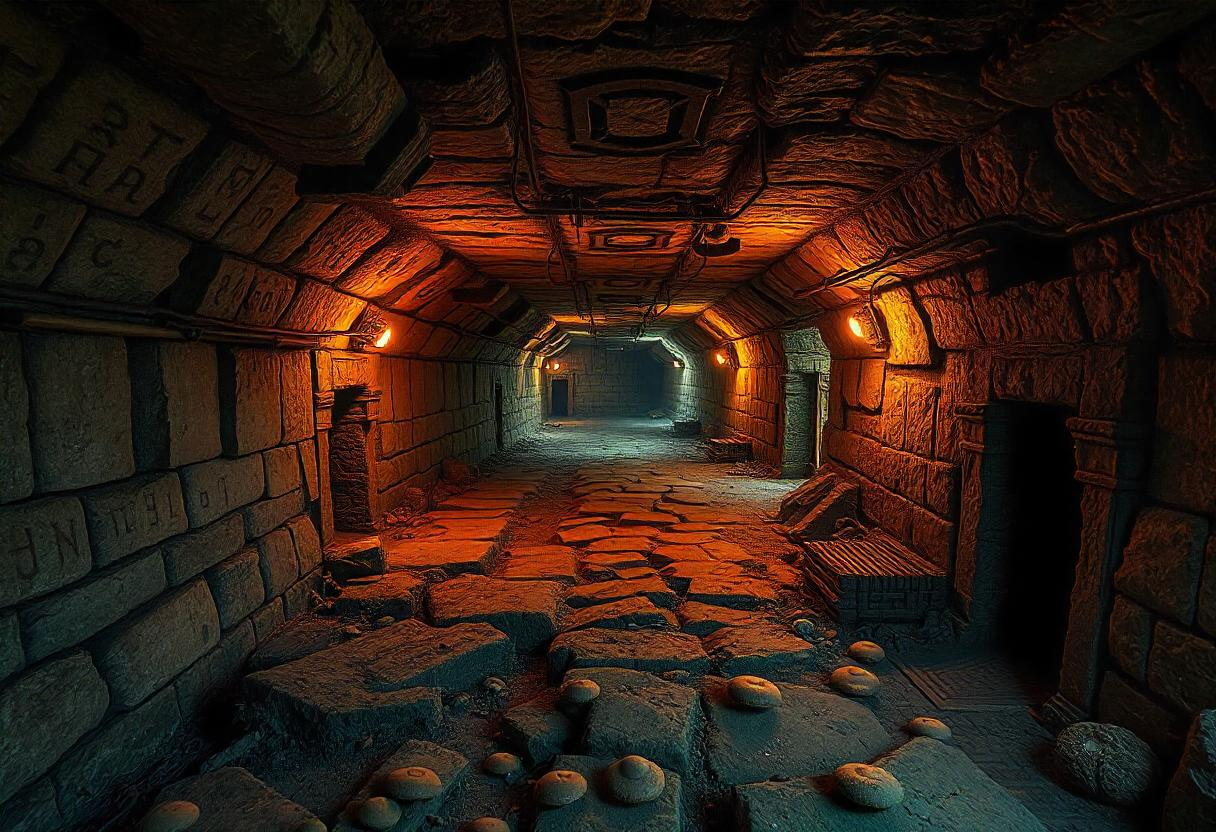The underground path battle map is an essential tool for RPGs, dungeon crawlers, and tabletop strategy games. Whether you’re navigating eerie tunnels, ancient ruins, or hidden lairs, this type of map provides a dynamic setting for exciting encounters. Understanding the layout, strategies, and terrain features can significantly impact gameplay.
Key Features of an Underground Path Battle Map
An underground path battle map typically includes:
- Narrow corridors and tunnels – Challenge movement and positioning.
- Hidden traps and obstacles – Increase difficulty and strategy.
- Multiple branching paths – Allow for diverse tactical choices.
- Dark environments and lighting mechanics – Require strategic visibility planning.
- Thematic elements – Such as ancient ruins, underground rivers, or abandoned mines.
Why Use an Underground Path Battle Map?
An underground setting enhances gameplay by introducing:
- Tactical movement challenges due to tight spaces.
- Ambush and stealth opportunities for both players and enemies.
- Environmental storytelling with unique underground themes.
- Resource management dynamics requiring players to strategize supplies like torches and food.
Best Uses for an Underground Path Battle Map
The underground path battle map can be used in various RPG settings, including:
- Dungeons & Dragons Campaigns – Perfect for dungeon crawling, treasure hunts, or secret hideouts.
- Tactical Miniature Battles – Great for games requiring strategic positioning and line-of-sight mechanics.
- Sci-Fi or Post-Apocalyptic RPGs – Representing underground bunkers or alien tunnels.
- Survival Horror Adventures – Setting the scene for eerie encounters with unknown creatures.
- Fantasy and Mythological Quests – Featuring hidden temples, cursed ruins, or lost civilizations.
How to Design an Engaging Underground Path Battle Map
Step 1: Plan the Layout
A well-designed underground path battle map should balance open areas and confined spaces. Consider:
- Main pathways – Wide enough for larger combat encounters.
- Side tunnels and secret passages – Adding elements of discovery.
- Dead ends and looping paths – Creating risk-reward scenarios.
Step 2: Add Terrain Features
A battle map feels immersive when it includes:
- Rock formations and uneven terrain – Affecting movement and line of sight.
- Underground rivers or lava flows – Providing natural obstacles.
- Moss-covered walls and stalactites – Enhancing visual storytelling.
Step 3: Incorporate Tactical Elements
To make battles dynamic, use:
- Traps and hazards – Pitfalls, crumbling bridges, or collapsing tunnels.
- Lighting challenges – Torches, glowing crystals, or magical light sources.
- Interactive elements – Levers, ancient mechanisms, or destructible walls.
Tactical Strategies for Navigating an Underground Path Battle Map
Using strategic movement and positioning can help players gain an advantage.
1. Mastering Positioning
- Place archers or ranged characters in choke points.
- Use narrow corridors to force enemies into single-file combat.
- Take advantage of cover and high ground.
2. Managing Light and Visibility
- Use torches or magic to reveal hidden threats.
- Exploit darkness by ambushing opponents.
- Utilize spells or items that enhance vision.
3. Utilizing the Environment
- Trigger cave-ins to block enemy reinforcements.
- Use sound cues to detect approaching threats.
- Avoid hazards such as unstable ground or poisonous gas.
Top Software and Tools for Creating an Underground Path Battle Map
For those who want to design their own maps, several tools can be used:
- Dungeon Scrawl – Simple and intuitive for quick maps.
- Inkarnate – Great for detailed fantasy-style maps.
- DungeonDraft – Features advanced terrain customization.
- Roll20 – Built-in battle map tools for online play.
- Wonderdraft – Perfect for designing immersive underground layouts.
Common Mistakes to Avoid in Underground Path Battle Maps
To ensure a seamless experience, avoid these common pitfalls:
- Overly complex layouts that slow down gameplay.
- Lack of alternative paths, reducing strategic choices.
- Too many environmental hazards, making movement frustrating.
- Inconsistent lighting mechanics, leading to confusion.
- Forgetting player accessibility, ensuring maps are clear and readable.
Best Pre-Made Underground Path Battle Maps
For those who prefer ready-made maps, some excellent sources include:
- Patreon Creators – Many artists offer high-quality maps for RPGs.
- DriveThruRPG – A vast marketplace for battle maps.
- DeviantArt and Reddit – Communities that share free maps.
- Fantasy Map Creators Websites – Platforms offering detailed underground designs.
Also read: Good Morning with Happy Sunday: A Joyful Start to Your Day
Conclusion
A well-crafted underground path battle map enhances the tactical depth of any game, whether it’s a classic fantasy RPG or a sci-fi adventure. By understanding its key features, designing thoughtful layouts, and utilizing strategic movement, players and game masters can create unforgettable underground encounters.
This type of map is not just about location—it’s a storytelling tool. From hidden treasures to lurking dangers, every corner of an underground path battle map holds an opportunity for excitement. Whether you’re designing your own or using a pre-made version, make sure it serves the narrative and tactical goals of your game.
So next time your adventurers descend into the depths, ensure they have a thrilling and immersive experience. Plan your routes, light your torches, and prepare for a battle that will test every strategic skill!
FAQs
What is an underground path battle map used for?
It is used in tabletop RPGs and strategy games to simulate underground environments for tactical encounters and exploration.
How can I create my own underground path battle map?
You can use map-making tools like Dungeon Scrawl, Inkarnate, or DungeonDraft to design a detailed and immersive battle map.
What are the best strategies for playing on an underground battle map?
Use positioning, light management, and environmental features to gain tactical advantages over opponents.
Where can I find free underground path battle maps?
Websites like Reddit, DeviantArt, and DriveThruRPG offer free and premium battle maps for RPG enthusiasts.
What types of terrain features are common in underground path battle maps?
Common features include tunnels, traps, hidden passages, underground rivers, crumbling walls, and stalactites.
Can I use an underground path battle map for sci-fi or horror settings?
Yes, it works well for abandoned bunkers, alien tunnels, or post-apocalyptic environments, adding mystery and tension.



